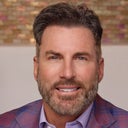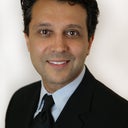Posted underRhinoplasty q&a
Can I include a rhinoplasty, chin lipo, brow lift and under eye procedure with my forehead lift? (Photos)
I researched a lot. I know I need a forehead lift. I have always struggled with my looks. Areas of concerns are my redness/deep indents under eyes and redness around nose. For last year (8 treatments) been doing BBL laser around nose and under eyes. has cut down just a little redness. Anything else I can do? have always had issue under eyes since I was child. I need a forehead reduction, rhinoplasty with lipo under chin. Would a brow lift benefit me? I want my brows higher with my lids not saggy Can I combine all procedures? I am a 31 and healthy.
Answers (8)
From board-certified doctors and trusted medical professionals
Dr. Steven M. Denenberg, MD

Dr. Steven M. Denenberg, MD
Board Certified Facial Plastic Surgeon
Answer
Dr. Paul E. Chasan, MD, FACS

Dr. Paul E. Chasan, MD, FACS
Board Certified Plastic Surgeon
Answer
Dr. Toby Mayer, MD

Dr. Toby Mayer, MD
Board Certified Facial Plastic Surgeon
Answer
Dr. Ronald J. Edelson, MD

Dr. Ronald J. Edelson, MD
Board Certified Plastic Surgeon
Answer
Dr. Sam Naficy, MD, FACS

Dr. Sam Naficy, MD, FACS
Board Certified Facial Plastic Surgeon
Answer
Dr. William Portuese, MD
Dr. William Portuese, MD
Board Certified Facial Plastic Surgeon
Answer
Dr. Jeffrey C. Hamm, MD - Account Suspended
Dr. Jeffrey C. Hamm, MD - Account Suspended
Board Certified Plastic Surgeon
Answer
Dr. Michael Elam, MD (retired)
Dr. Michael Elam, MD (retired)
Board Certified Otolaryngologist
Answer
More Rhinoplasty Questions
See all Rhinoplasty Q&AWE SEND PRETTY
EMAILS
What’s trending? Who’s turning heads? Which TikTok myths need busting? We’ve got you. No fluff, no gatekeeping—just real talk. Get our free, unfiltered newsletter.
